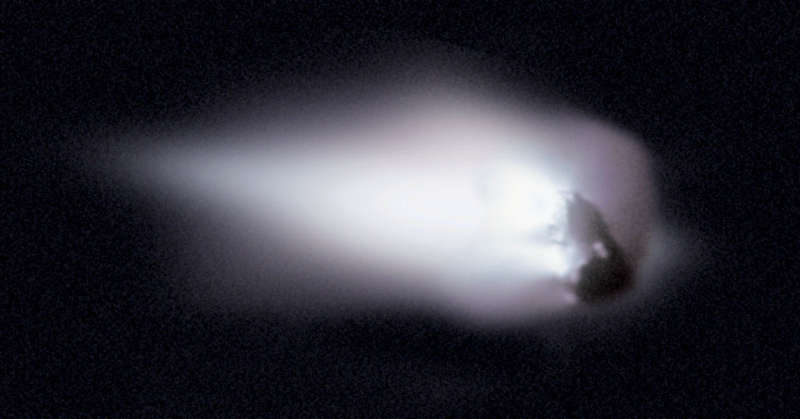Comet Halleys Nucleus: An Orbiting Iceberg

Explanation:
What does a comet nucleus look like?
Formed from the
primordial stuff of the Solar System, comet nuclei were
thought to resemble very dirty icebergs.
But
ground-based
telescopes revealed only the surrounding
cloud of gas and dust of active comets nearing the Sun,
clearly resolving only the
comet's coma, and
the characteristic
cometary tails.
In 1986, however, the European spacecraft
Giotto
became one of the first
group of spacecraft
ever to encounter and
photograph the nucleus of a comet, passing and
imaging
Halley's nucleus
as it approached the sun.
Data from
Giotto's
camera was used to generate
this enhanced image of the potato shaped nucleus that
measures roughly 15 kilometers across.
Some surface features on the
dark
nucleus are on the right, while gas and dust
flowing into Halley's coma are on the left.
Every 76 years
Comet
Halley returns to the inner solar system
and each time the
nucleus sheds about a 6-meter deep layer of its
ice and rock into space.
This debris shed from
Halley's nucleus eventually
disperses into an orbiting trail responsible for the
Orionids
meteor shower,
in October of every year, and the
Eta Aquariids meteor shower every May.
Note: An
APOD editor will review astronomy images of 2009,
hosted by the Amateur Astronomers Association of New York on Friday,
January 8 at the American Museum of Natural History, NYC.
Authors & editors:
Robert Nemiroff
(MTU) &
Jerry Bonnell
(USRA)
NASA Web Site Statements, Warnings,
and Disclaimers
NASA Official: Jay Norris.
Specific
rights apply.
A service of:
LHEA at
NASA /
GSFC
& Michigan Tech. U.

